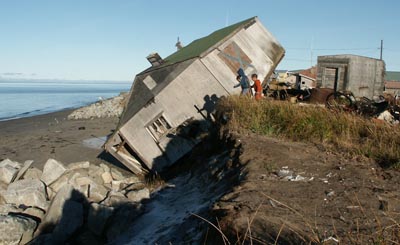Stanford Law School Students Assist White House Review of Interagency Climate Change Initiatives
Stanford Law School students submitted a report this summer to top White House officials that critiques the way they are implementing climate change policies across the federal government.

Their report analyzes management tools that the White House has used to coordinate efforts to reduce the carbon footprint throughout the federal government, respond to climate impacts on federally managed land and water resources, site more renewable energy facilities on public lands, and share climate impact data with federal agencies and state, tribal and local partners.
“Future presidents must find effective ways for federal and state agencies to work together to tackle climate change issues,” explained David J. Hayes, the Distinguished Visiting Lecturer in Law at Stanford Law School (SLS) who led the practicum that produced the report.
White House access
Top officials in the White House, including Brian Deese, counselor to the President; Beth Cobert, deputy director of the White House Office of Management and Budget (OMB); and Christy Goldfuss, managing director of the White House Council on Environmental Quality, welcomed the Stanford analysis and cooperated with the effort.
Beth Cobert, an organizational expert who spent most of her career at McKenzie & Company before her appointment as OMB deputy director, offered her perspectives and participated in an extended meeting with the students in late May. President Obama recently appointed her to take over the U.S. Office of Personnel Management.
The report, called “A 21st Century Governance Challenge: Finding Effective Mechanisms to Address Climate Change Across the Federal Government,” resulted from work the students did in the Energy and Environmental Governance practicum offered this spring as part of the law school’s Law and Policy Lab. In SLS practicums, students work in small teams, under faculty supervision, with real clients to develop policy solutions to pressing social and environmental issues.
The students in this practicum interviewed officials in Washington, D.C., and Sacramento to identify the organizational approaches that tended to produce better results when implementing climate change-related initiatives in multiple federal agencies.
Hayes explained, “This report analyzes prior and ongoing interagency climate change initiatives and provides a roadmap for improving how multiple federal agencies can more effectively work together, and with the White House, as they grapple with climate change imperatives that require a high level of coordination, cutting across agency lines.”
Mixed results
The students found that success in implementing climate change policies across multiple agencies in enhanced with White House involvement and accountability, clearly defined goals and metrics, budget support and performance incentives.
“It’s incredibly important that the Executive Branch lead the way on climate change issues,” said one of the students, Caitlin Troyer, JD ’17. “This means not only being outspoken about the potential impacts of climate change, but also leading by example and putting the full weight of the Executive Branch behind climate change abatement efforts.”
Claudia Antonacci, JD ’17, noted that managers of interagency initiatives on climate change should “clearly delineate when they start and end new initiatives, so they don’t have legacy issues hanging around.” In researching infrastructure impacts on climate change, she found 15 different documents relating to one initiative and struggled to understand the current status of each of them.
“Federal databases of climate information are outdated and are not designed for users to easily access the information they need,” agreed Neil Raina, JD ’16.
The other SLS students who worked on the report were Adam Bowling, JD ’16; Eeshan Chaturvedi, LLM ‘15; Siddharth Fresa, LLM ‘15; Heather Kryczka, JD ’16; and Michelle Wu, JD ’17.
The report examined different approaches by the federal government and, in one case, the State of California, for coordinating climate change initiatives. The students concluded that approaches have been largely successful in reducing the government’s carbon footprint and in coordinating the siting of major renewable energy projects on public lands. They also found that the State of California has effectively coordinated greenhouse gas reductions across a number of affected agencies.
Efforts to coordinate federal interagency support for addressing climate impacts, responding to climate impacts on natural resources managed by the federal government, and using geographic mapping tools to make climate change impact data widely available have commanded less high-level attention and have been less successful to date.
